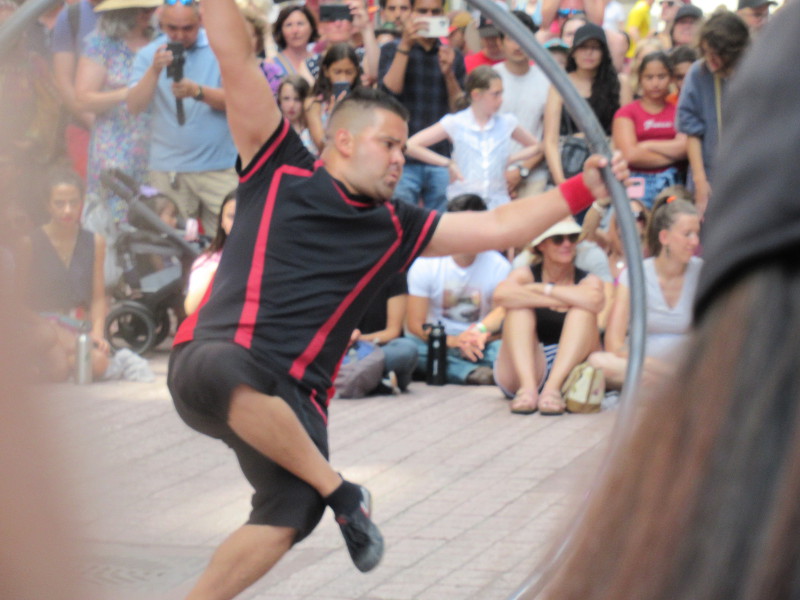I met a Porcupine (Erethizon dorsatum) on my walk!
18 comments

I was more than half way through my walk when a porcupine and I came face to face on the trail.

It was a gorgeous day with a temperature around -3 C (30.2°F) when I set out.

It's always interesting to see signs of life around us in the bush. Typically, I see birds, maybe squirrels and rabbits. I have only seen a porcupine in the wild once before.

The snow on the trail was well-packed by skis, toboggans, footprints, and dog prints. I even passed a big wheeled bicycle with tires meant for snow.

I made my way through the pine bush then took the bridge across the swamp.

And I placed a little birdseed on the bridge's railing. Surprisingly, bird feeders have been hung along the trail.

I swear these cedar trees have more holes in them every time I walk by.

Bird feeders in the bush have the same problem we have at home...

... squirrels!

At least he posed for me.

Beautiful long shadows on the snow.

There are tracks all over the place. I had turned around and walked back across the bridge.

As I stepped off, I saw something heading down the trail towards me. We both stopped. There is nothing to fear. North American porcupines are nearsighted and slow moving vegetarians. It's only when you get too close and threaten them, that you might discover their famous defences.

He (probably a male due to his size) sat back and seemed to be wondering what to do. He didn't chatter his teeth or move away. There was no foul odour that they can release when they are agitated.

While he was thinking, I zoomed in with my camera. I was surprised he hadn't made for a tree. They are as likely to be there as on the ground, well adapted to climbing.

His dark eyes are barely visible in the late afternoon sun. Porcupines are typically this dark brown to black colour with white guard hairs. What is unique are their approximately 30,000 quills, basically modified hollow hairs covered with keratin.

Those quills pose a danger to predators and curious dogs. A porcupine will slap an animal with its tail, releasing the quills and they are quite painful. With barbed ends, they work their way into flesh and they must be removed before they move deeper causing damage and infection.

I was moving forward slowly, so he turned and lumbered off in another direction.

One of their defensive maneuvers is to roll into a ball which protects their head and soft underbelly. They intimidate by chattering or rattling their quills.

Cottagers and campers might think of them as pests. They are North America's second largest rodent and they chew wood to sharpen their teeth and sometimes they chew other unexpected things, probably attracted to the salt from our hands. So if your axe has a wooden handle, don't leave it outside!

And off he goes down a side trail. He's unlikely to meet anyone else today, but what a nice surprise for me!

I'm not too far from the parking lot now.

Just the usual birds at the feeder.
References
Wikipedia ~ North American Porcupine
Images
Photos from my Canon SX620 HS on the Old Quarry trail in the Ottawa greenbelt.

Enjoy!
@kansuze




Comments